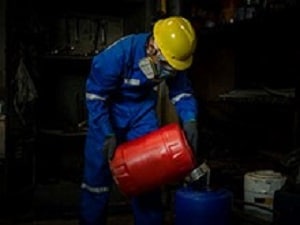What Every Business Needs to Know about Workplace Exposure Monitoring

Employers have both a legal and an ethical obligation to address workplace hazards, but a workplace in which the health and safety of workers is prioritized and well managed has benefits to the health of your business as well.
From a boost to morale and productivity to reduced exposure to workers’ compensation claims, a diligent approach to industrial hygiene and exposure monitoring is an investment in your bottom line as much as it is a responsibility.
Exposure monitoring gives you the information you need to ensure that you have minimized the risk of harm posed by exposure to chemicals, pollutants, or other airborne irritants as well as harmful levels of noise, light, extreme temperatures, or harmful production processes, among other sources of potential risk in the workplace.
Mitigating Harmful Exposure in the Workplace
Detailed monitoring and reporting by a certified industrial hygienist allows business owners to mitigate sources of exposure and harm, while also creating a reliable and accurate record of their efforts to do so.
Such diligence is a factor in gaining the confidence and trust of your workforce, your insurance provider, and your customers, especially if you do work as a government contractor.
It is also key to compliance with federal regulatory agencies like the Occupational Safety and Health Administration (OSHA).
Under the 1970 Occupational Safety and Health Act, each employer is responsible for providing “employment and a place of employment which are free from recognized hazards that are causing or are likely to cause death or serious physical harm to his employees…”
Workplace exposure monitoring ensures that potentially harmful conditions are identified, quantified and corrected.
Why Do Workplace Exposure Monitoring?
There are many reasons to perform exposure monitoring in the workplace:
- In response to an employee illness, injury or complaint
- To minimize workers’ exposure to potentially harmful materials or conditions
- To minimize business exposure to workers’ compensation claims and litigation
- To gain an understanding of the risks posed by the introduction of new chemicals, processes, or workplace conditions
- To document commitment to workplace health and safety
- To maintain compliance with government contracting requirements
- To avoid the risk of fines or shutdowns related to OSHA compliance
- To ensure compliance with ASHRAE standards for indoor air quality and ventilation system design
What is Exposure Monitoring?
Exposure monitoring is conducted by certified industrial hygienists to determine whether employees are at risk as the result of exposure to workplace hazards that exceed acceptable levels established by OSHA and other health and regulatory authorities.
Exposure monitoring can include indoor air quality sampling and assessment, the collection of personal exposure data as well as testing for levels of noise, temperature and light exposure, along with other potential hazards.

The resulting report can include recommendations for mitigation that include engineering controls, like ventilation and exhaust equipment or HVAC improvements; administrative controls, like work schedules designed to reduce exposure; and personal protective controls, like the use of respirators or other protective equipment.
The National Institute for Occupational Safety and Health (NIOSH) describes the hierarchy of controls represented by the various mitigation options, ranging from the most effective (elimination of the hazard) to the least effective (the use of personal protective equipment like gloves, masks, and respirators).
The Benefits of Investing in Exposure Monitoring
With decades of experience as both a government industrial hygienist and a member of the Omega team, David Martinez, CIH, has seen the benefits of exposure monitoring in a wide variety of applications.
Many government contracts require exposure monitoring, he says. It may also be required by insurance companies.
OSHA is also required to respond to employee complaints, which can trigger the need for exposure monitoring and reporting. An effective program for mitigation outlines the methods for minimizing exposure and answers the questions who, what, when, where and how, he says.
“If you require workers to wear respiratory protection, you have to have a program” that outlines when and how such protection is to be worn, as well as who is required to wear it, he said.
Types of Exposure Monitoring
Workplace hazards that may need to be addressed by exposure monitoring include:
- Indoor air quality issues related to mold and moisture, vapor intrusion, asbestos, lead paint, furniture and carpet fumes, faulty HVAC setting or improperly stored or ventilated chemicals
- Biological hazards such as bacteria, viruses and fungi
- Physical hazards such as electromagnetic ionizing and non-ionizing radiation. These can be a problem for people who have pacemakers or other embedded electric devices.
- Noise: OSHA requires that workers in noisy surroundings be periodically tested as a precaution against hearing loss.
- Chemical exposure hazards as the result of workplace processes like welding, spray painting and the application of dyes and coatings.
Keep Your Workplace Safe and Compliant with an Experienced Environmental Partner
At Omega Environmental, we have decades of experience in the accurate and cost-effective assessment and remediation of workplace risks, with exposure monitoring, mitigation, program development and reporting by certified and experienced industrial hygienists.
Our clients rely on us for thorough, reliable and effective management of environmental hazards in workplaces that include hotels and office buildings, college campuses, military housing and a wide array of other facilities.
Give us a call today to learn more about workplace exposure monitoring and industrial hygiene assessment.










